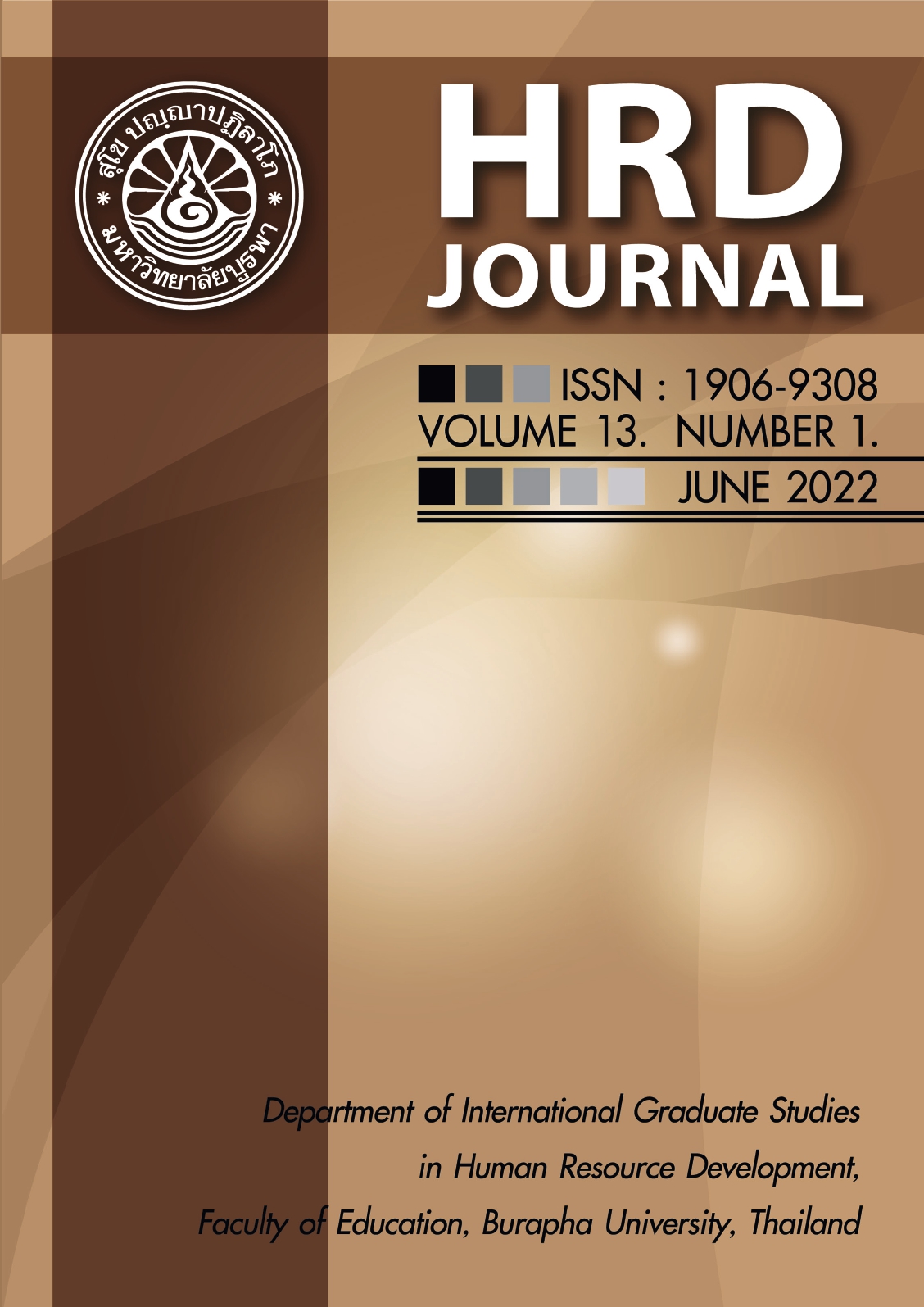A Study of Learning Management on Inclusive Education Program for Students with Special Needs of Elementary Level in Piboonbumpen Demonstration School, Burapha University
-
Keywords:
Planning, Model, Inclusive EducationAbstract
The research objectives were to 1) study the development results of inclusive education provision; 2) study the problems, the obstacles, and the solutions of inclusive education provision for special need students studying in primary level of Piboonbumpen Demonstration School, Burapha University. There were two groups of samplings in this research, namely 1) total sixty-three persons of school executives, regular primary program school teachers, special education school teachers, special education program students’ parents; and 2) total nine inclusive education program students. Data collection for the first sample group was project training evaluation forms, questionnaires, interview, and observation. Data collection for the second sample group regarded workshop project training evaluation form, questionnaires, participatory observation, informal interview, and other handouts. Data analysis was content analysis.
The results revealed as follows:
1) The development results of inclusive education provision for special need students at primary level of Piboonbumpen Demonstration School, Burapha University revealed that school executives, regular primary program school teachers, special education school teachers, special education program students’ parents understood the process of inclusive education provision at “high level”. They cooperated and followed the designed plans at “high level”. The students in the inclusive education program performed better. Performance of each process were majorly progressive at “high level” such as student admission and investigation, classroom selection and cohort, study plan management, learning and development promotion, media and amenities for learning promotion, continuous personnel specialized training, coordination and cooperation in school, special education classroom and regular classroom management, environment outside classroom for learning and safety promotion, communication with parents, meetings, and special education training for parents. Assessment and evaluation, personnel recruitment, personnel training budget, technology and media provision, and other supportive learning equipment needed to be improved
2) The problems and the obstacles of inclusive education provision for special need students at primary level of Piboonbumpen Demonstration School, Burapha University revealed that understanding and learning about special need individuals were sentimental sensitive. Therefore, assisting students based on behavior adjustment plan took more time to achieve within a semester. Providing special ability promotion of individuals needed longer time to complete as well as personnel, personnel training budget, technology and media, other supportive learning equipment were insufficient. The solutions to the problems were that of school executives, regular primary program school teachers, special education school teachers, special education program students’ parents worked together. Continuous and sufficient actions of assistance plan, inclusive education budget for special need students were significantly considered.
References
พงษ์ธร วชิระปราการพงษ์. (2560). การจัดการเรียนร่วมสำหรับเด็กที่มีความต้องการพิเศษในโรงเรียนสังกัดสำนักงานเขตพื้นที่
การศึกษามัธยมศึกษาในกรุงเทพมหานคร. วารสารบัณฑิตศึกษา มหาวิทยาลัยธุรกิจบัณฑิตย์, 5(2): 905-922.
สุนิสา สกุลเกื้อกุล, หยกแก้ว กมลวรเดช และ สุกัญญา รุจิเมธาภาส. (2563). รูปแบบการจัดการศึกษาแบบเรียนร่วมสำหรับ
สถานศึกษาในจังหวัดน่าน. วารสารมหาจุฬานาครทรรศน์, 7(8): 363-380.
อัญชลา เกลี้ยงแก้ว. (2560). การพัฒนารูปแบบการบริหารจัดการเรียนร่วมของโรงเรียนในสังกัดกรุงเทพมหานคร.
วิทยานิพนธ์ปรัชญาดุษฎีบัณฑิต, สาขาวิชาการบริหารการศึกษา, บัณฑิตวิทยาลัย, มหาวิทยาลัยสยาม.
Lamport, A. M., Graves, L., & Ward, A. (2012). Special needs students in inclusive classroom:
The impact of social interaction on educational outcomes for learners with emotional and
behavioral disabilities. European Journal of Business and Social Sciences, 1(5), 54-59.
McCarty, K. (2006). Full inclusion: The benefits and disadvantages of inclusive schooling an overview.
Azusa Pacific University. Retrieved on July 17, 2016 from http://files.eric.ed.gov/fulltext/
ED496074.pdf
Downloads
Published
How to Cite
Issue
Section
License
Copyright (c) 2022 Department of International Graduate Studies in Human Resource Development, Faculty of Education, Burapha University

This work is licensed under a Creative Commons Attribution-NonCommercial-NoDerivatives 4.0 International License.
Copyright@HRD Journal, Burapha University






